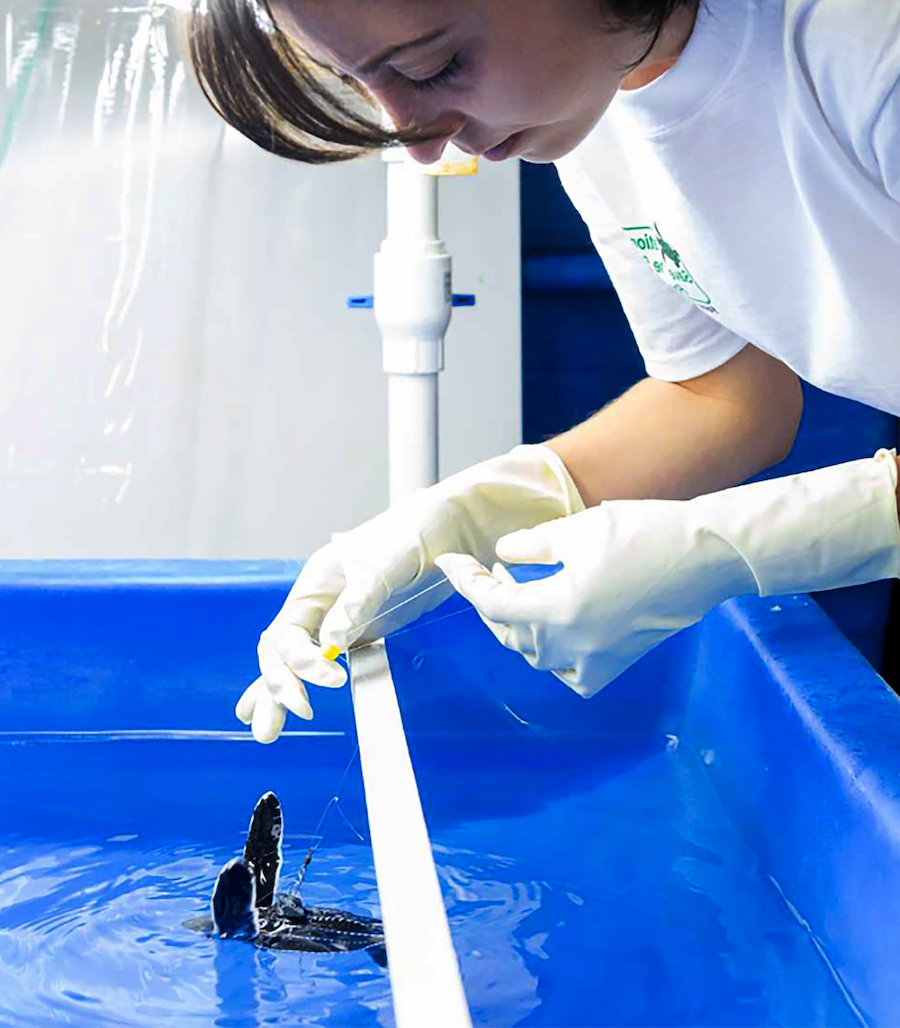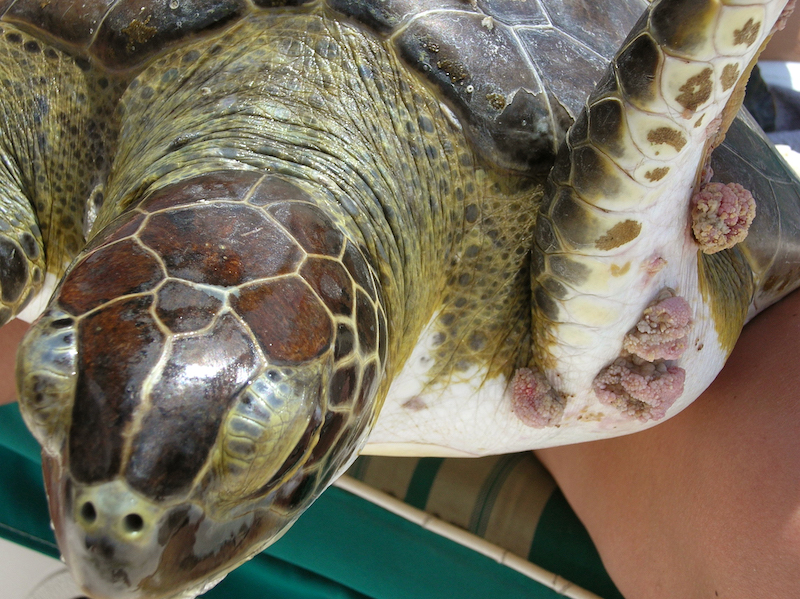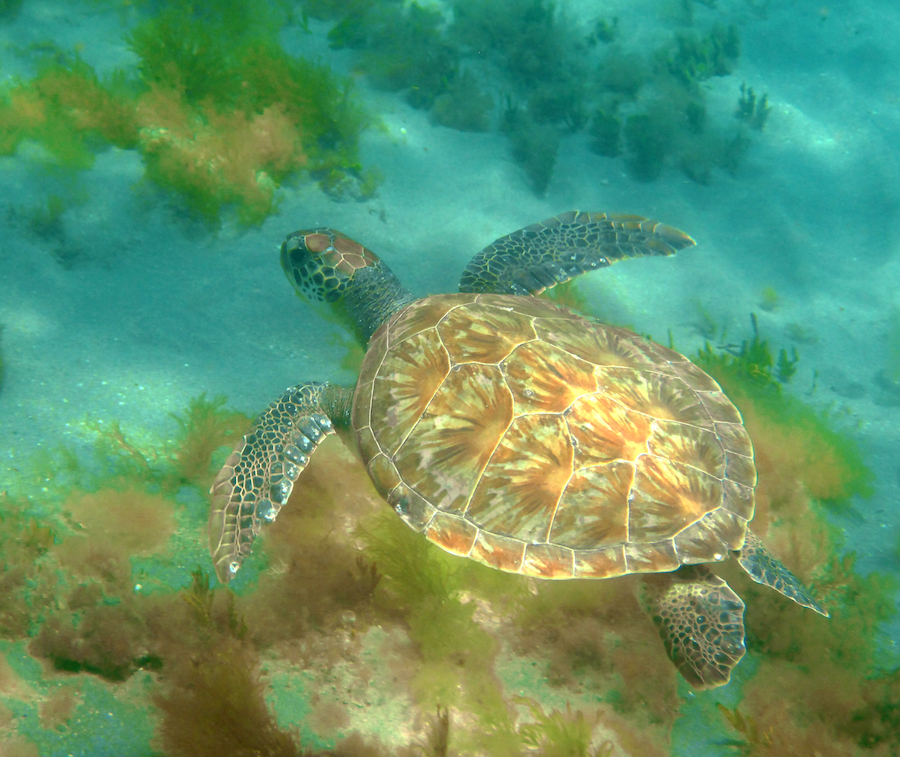

Because neonate leatherbacks cannot be found at sea, much of their biology must be learned from captive-raised animals. Leatherback sea turtles are especially difficult to raise in captivity for a number of reasons. Leatherbacks are an open ocean species that continuously swim; they are unable to recognize boundaries so they constantly swim into tank walls, which damages their delicate skin. In order to keep the turtle from harm in the laboratory, we provide each with a small leash so they can swim without hitting the tank walls. That system simulates an open water environment.
The next issue is their specialized, low-calorie diet: jellyfish and salps. If we fed them a nutritionally rich diet once a day as we do with green and loggerhead sea turtles, they’d develop dangerous digestive problems. Their stomach and intestines are different from those of other sea turtles. Several times a day, leatherbacks are fed a special gelatin diet developed by Dr. Wyneken and her team of leatherback specialists.
The leatherback captive environment must be clean, like “blue water” found offshore. The seawater that is used in leatherback tanks passes through a number of kinds of filters to kill microbes and remove organic compounds that normally occur in our coastal waters. Water needs to be cooled to blue water temperatures before entering the tank.
Raising leatherbacks in captivity is expensive (about $1,000 - $1,500 per turtle), time-consuming, and requires careful attention to each turtle. Dr. Wyneken’s leatherback husbandry project at the FAU Marine Lab is one of the only projects of its kind in the world that successfully raises neonate leatherbacks for study and release.
 Papilloma Disease
Papilloma DiseaseYoung green sea turtles that live in polluted waters often have a disease called fibropapillomatosis (FP). That long word describes tumors that grow on their soft tissues, on the shell, over their eyes, and even inside the animals. While the tumors are not deadly themselves, they can make it hard for turtles to swim, feed, or escape predators, and the turtles can get entangled in fishing lines or other debris that causes cuts. Currently, the only treatment for FP is surgery to remove the tumors. We looked to see if exposing turtles to more sunlight would boost their vitamin D levels and help their immune system fight the disease.
Turtles that got more sun showed higher vitamin D levels over time than animals in shaded tanks and had less tumor regrowth. Adding some sunshine to the treatment for FP could thus help rehabilitation facilities improve patient outcomes.
 Hooked on Turtles
Hooked on Turtles
Juvenile green turtles should be eating seagrass and algae, but some turtles seem to prefer the bait used by fishermen. Some turtles have been caught on fisherman’s hooks four times at the same fishing pier! Dr. Milton’s students are comparing the behavior and diet of green turtles caught by fishermen to those found in the wild. The goal is to understand what benefit turtles are receiving from eating fishing bait, over their natural herbivorous diet.